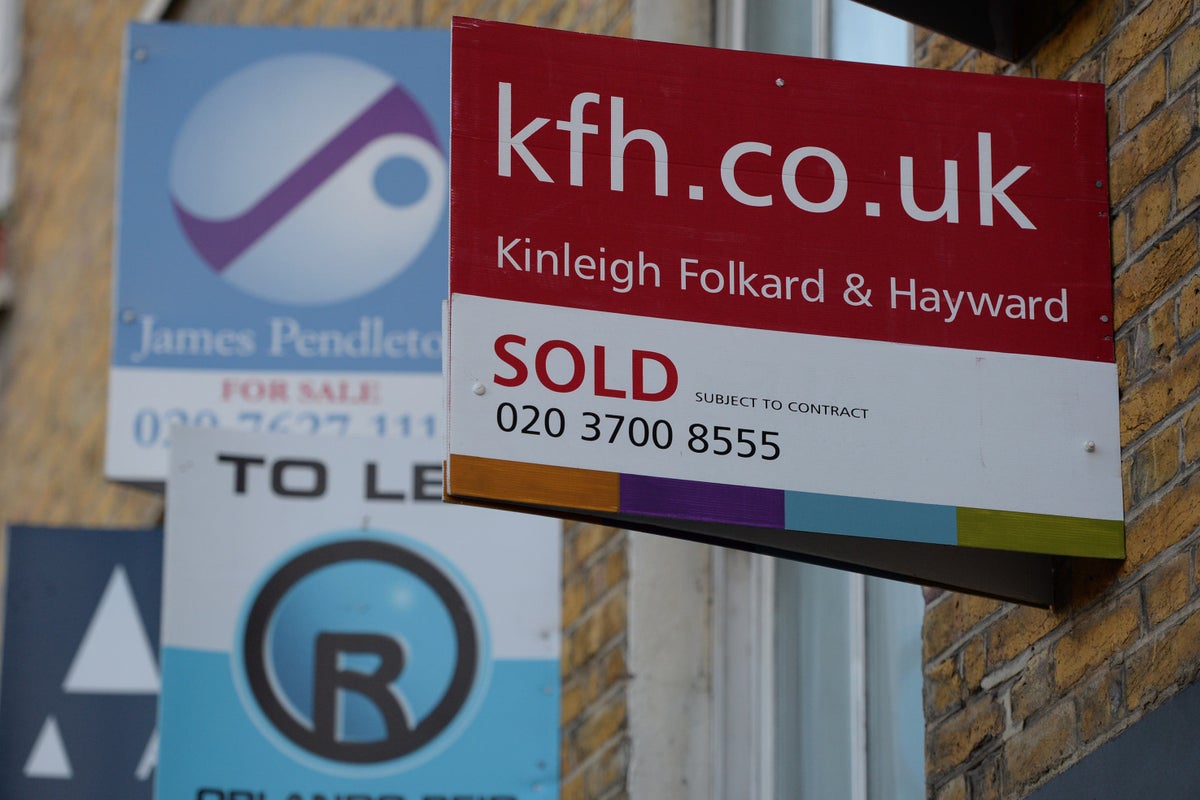
Home buyers ‘may look to split higher stamp duty costs with sellers’
Some home buyers putting in offers from Tuesday may ask to split the cost of higher stamp duty rates with sellers, a property market expert has said.
From April 1, nil rate stamp duty discounts will shrink, with first-time buyers seeing the zero rate threshold reduce from £425,000 to £300,000 and home movers seeing theirs halve from £250,000 to £125,000. Stamp duty applies in England and Northern Ireland.
Richard Donnell, executive director at Zoopla, said: “Home buyers will expect to reflect this extra cost in their offers, typically looking to split the cost with the seller. On the whole the amounts are not large, but the overall impact will keep house price growth in check over 2025.”
Mr Donnell said housing market activity continues to increase despite the ending of stamp duty relief.
He said: “Zoopla’s latest data shows sales agreed up 5% year-on-year, with many more homes for sale. There is a stamp duty hangover effect in London where first-time buyers face the highest increase in costs of buying. We expect sales to grow 5% over 2025 to 1.15 million.”
In February, Zoopla calculated that the proportion of first-time buyers in England and Northern Ireland who will need to pay stamp duty will double from April.
The firm estimated the share of first-time buyers paying the tax will jump from 21% to 42%.
The proportion of existing homeowners buying a new home as their main residence who will be liable to pay stamp duty will increase from 49% to 83%, according to Zoopla.
HM Revenue and Customs (HMRC) figures released last week showed a sales surge as buyers rushed to beat the deadline.
An estimated 108,250 home sales took place in February – 28% higher than February 2024 and 13% higher than January 2025.
Get a free fractional share worth up to £100.
Capital at risk.
Terms and conditions apply.
Get a free fractional share worth up to £100.
Capital at risk.
Terms and conditions apply.
Tom Bill, head of UK residential research at Knight Frank, said: “The jump in February proves that nothing moves the UK housing market quite like a change in stamp duty.”
Jason Tebb, president of OnTheMarket, said: “Increased stock, as sellers try to take advantage of the spring market, means buyers have more choice than has been the case for a while. This is putting them in a stronger negotiating position and they remain price sensitive.”
Credit information company Experian released data on Monday showing the number of mortgage applications in the final quarter of 2024 jumped by nearly a third (32%) compared with the same period in 2023.
John Webb, a consumer affairs expert at Experian UK and Ireland, said: “Our data suggests that consumers have been quite resilient, with a significant increase in mortgage applications in the last quarter of 2024 compared to the same period in 2023.
“However, rising house prices in some areas of the country have forced first-time buyers to look further afield to get on to the property ladder.”
Colleen Babcock, a property expert at Rightmove, said: “Most affected by the higher charges will be first-time buyers in higher-priced areas of the South, where some could pay up to £11,250 more in stamp duty from April.
“London, one of the most affected areas due to higher property prices, is where we’re seeing more first-time buyers going through the completion process compared to last year, many who will spend the coming days trying to beat the deadline.
“Agents tell us they don’t expect a major impact on activity after March’s deadline, and that they have been working with buyers and sellers to factor in additional charges.”
Calculations by Rightmove show first-time buyers in London who are looking to escape stamp duty charges could be particularly affected by the changes from Tuesday.
The website estimates that less than one in 10 (9%) homes on the market in the capital are priced at under the £300,000 nil rate threshold kicking in from April 1, compared with 27% which are under the current £425,000 threshold.
By comparison, in the North East of England, nearly three-quarters (74%) of homes for sale will still be under this threshold from April 1, down from 87%, Rightmove estimated.
According to research from Barclays, home buyers estimate they will pay £6,512 in additional fees on average if their sale is not completed before April 1.
The Opinium survey of 2,000 people commissioned by the bank found that four in 10 people cited the cost of a deposit as one of the biggest barriers to owning a home, and 23% of younger adults in the Gen Z generation – aged 18 to 27 – are doing additional jobs to help raise a deposit.
There may be some consolation for buyers missing the March 31 deadline, with some lenders launching mortgage deals with cash sweeteners.
Yorkshire Building Society unveiled a new mortgage range this week, offering first-time buyers up to £6,250 cashback.
The society’s director of mortgages, Ben Merritt, said the move “is designed to help cushion that blow (of the stamp duty changes) for the majority of aspiring homeowners”.
Nottingham Building Society has new mortgages offering up to £5,000 cashback.
Skipton Building Society has also launched a new cashback range.
Santander UK said on Friday last week that it had eased its mortgage affordability rules in response to a call from the Financial Conduct Authority (FCA) for lenders to design their rates to best meet customers’ needs.
Some customers will be able to borrow between £10,000 and £35,000 more than previously, the bank said, depending on individual circumstances and subject to affordability checks and loan-to-income limits.










